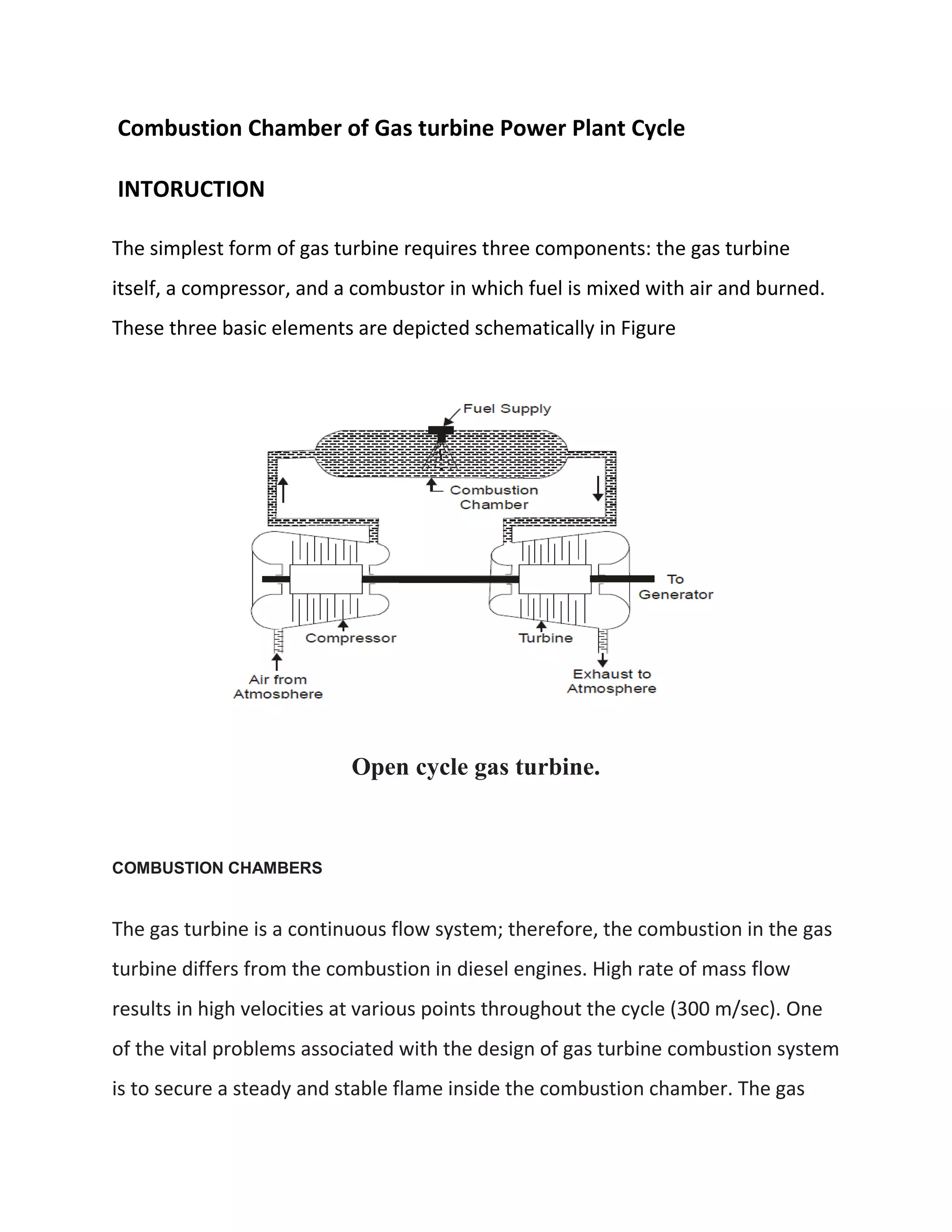The document summarizes the key components and functioning of a gas turbine combustion chamber. It describes the combustion chamber, diffuser, liner, snout, dome, and swirler. The combustion chamber must stabilize flames in a continuous high-velocity air flow. It utilizes techniques like bluff bodies or swirl to generate recirculation zones for ignition and flame anchoring. The liner must withstand high temperatures and is cooled using film or transpiration cooling techniques.



















